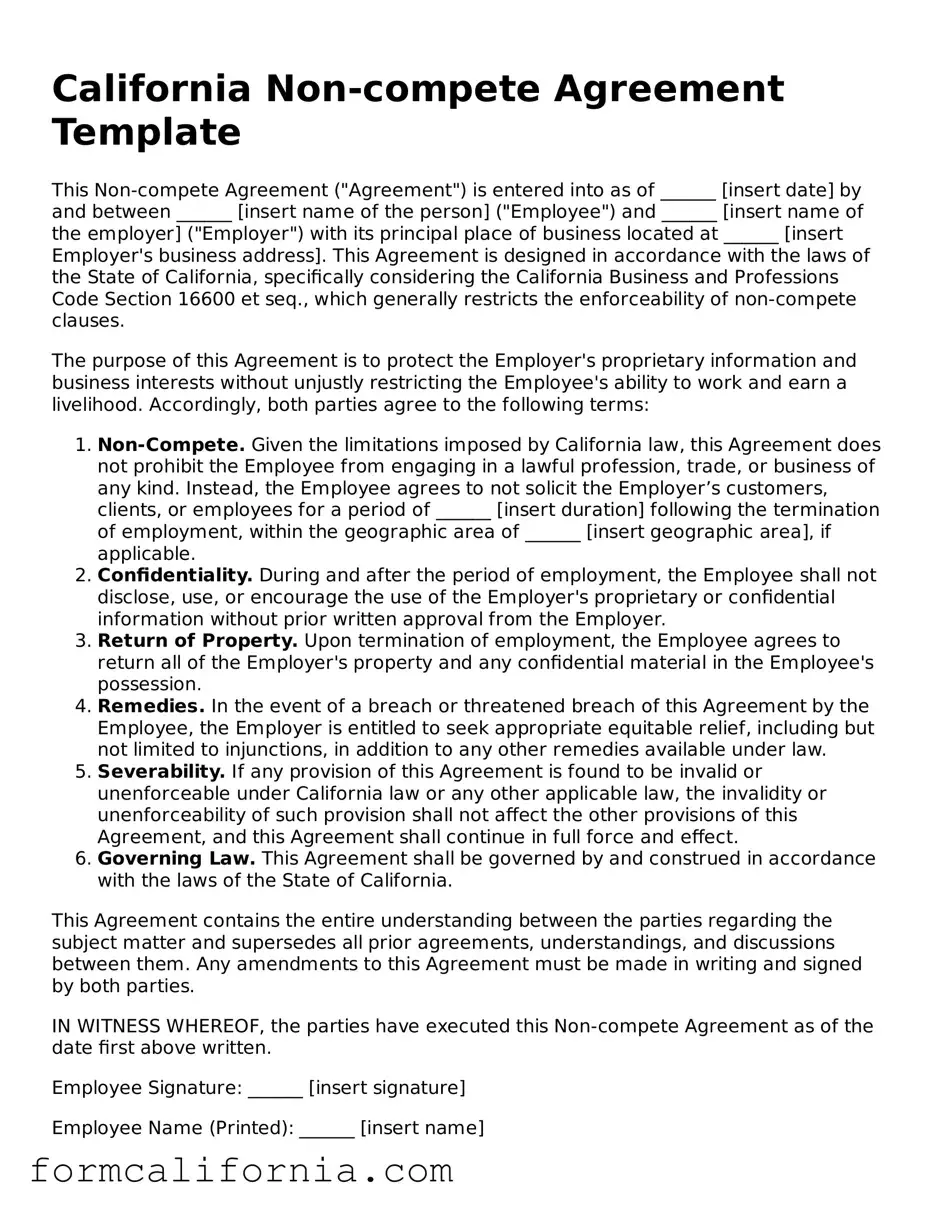The California Non-compete Agreement form shares similarities with a Confidentiality Agreement, which is designed to protect sensitive information. Both documents restrict the parties' ability to share proprietary information, but a Confidentiality Agreement specifically focuses on the nondisclosure of confidential details, such as trade secrets, business practices, or client lists, without overtly restricting future employment opportunities.
Similarly, a Non-disclosure Agreement (NDA) is akin to the Non-compete Agreement in that it aims to safeguard confidential information. While a Non-compete Agreement limits a person’s employment opportunities post-employment, an NDA explicitly prohibits the sharing of any confidential information obtained during employment, focusing on the protection of information rather than employment restrictions.
A Non-solicitation Agreement also shares common ground with the Non-compete Agreement. This document prevents employees from poaching clients or other employees from the business after they leave. Unlike a Non-compete, which can limit where and how someone can work, a Non-solicitation Agreement focuses on protecting the company’s customer relationships and workforce stability.
The Employment Agreement often includes clauses found in a Non-compete Agreement, making them closely related. This comprehensive document outlines the terms of employment, including duties, salary, and term length, and may incorporate non-compete clauses to prevent employees from joining competitors immediately after their employment ends, alongside other conditions of employment.
An Independent Contractor Agreement resembles the Non-compete Agreement when hiring external contractors. It defines the scope of work, compensation, and terms under which the contractor operates. Similar to some Non-compete Agreements, it may include provisions that prevent the contractor from engaging in competitive practices during and after the contract term.
A Severance Agreement, which is negotiated at the end of an employment relationship, can also be similar to a Non-compete Agreement. It outlines the compensation and benefits an employee will receive upon termination. Often, it includes clauses that restrict the former employee’s ability to compete against the company for a certain period, in exchange for the severance package.
A Partnership Agreement, while primarily detailing the operation and management of a business partnership, can contain clauses similar to those in a Non-compete Agreement. These clauses might restrict partners from engaging in competing businesses, ensuring that all efforts are directed towards the success of the shared enterprise instead of outside interests.
Lastly, a Sale of Business Agreement often includes non-compete clauses to prevent the seller from starting a new, competing business within a certain time frame and geographic area. This resemblance lies in the mutual interest of both documents to protect business interests and market position by limiting competition.
